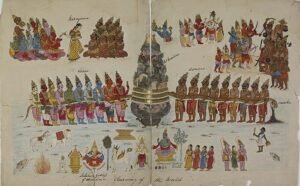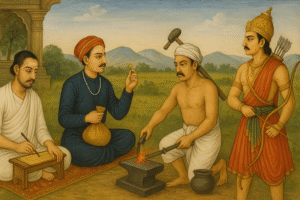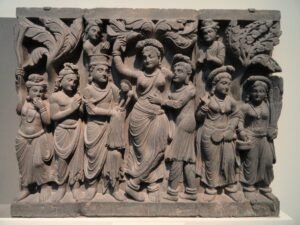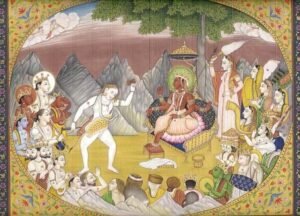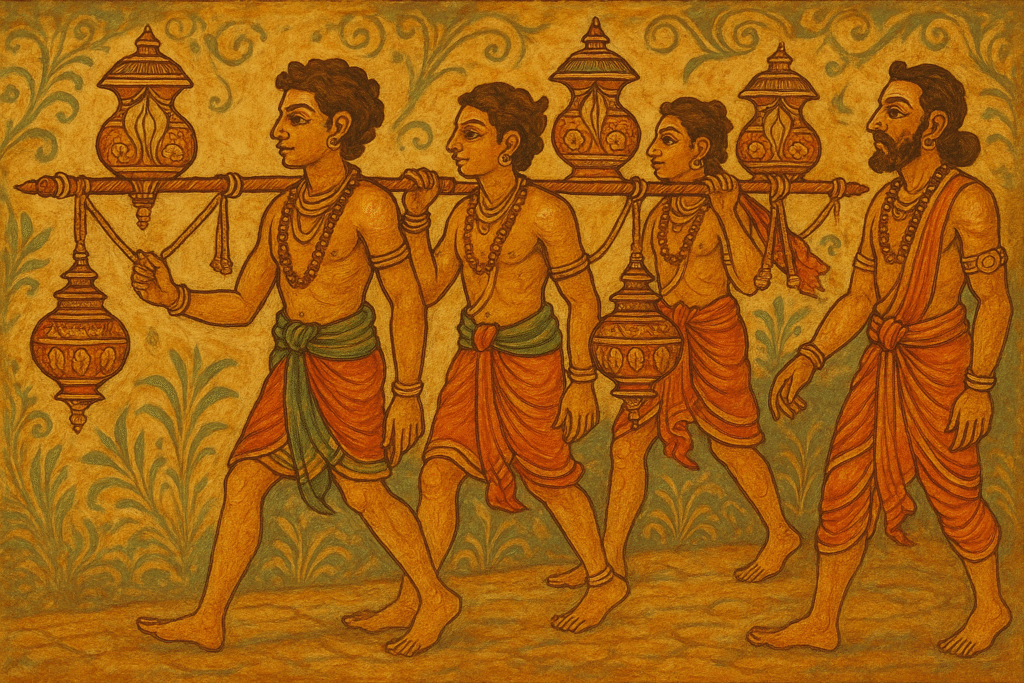
Every year, North India witnesses a river of orange – streams of devotees, barefoot, carrying decorated bamboo poles with pots hanging at both ends. These are the Kanwariyas, Shiva’s ardent devotees, walking hundreds of kilometres with unwavering resolve. But who are they really? Where did this tradition begin? How old is it?
Who are Kanwariyas?
Kanwariyas are Hindu devotees who participate in the Kanwar Yatra, an annual pilgrimage dedicated to Lord Shiva. They fetch sacred water from the Ganga river, mostly from pilgrimage hubs like Haridwar, Gaumukh (Gangotri glacier), or Sultanganj in Bihar. They carry this water in kanwars – decorated bamboo poles slung across the shoulders with water pots tied at both ends. Their final destination is usually a local Shiva temple or prominent Jyotirlingas such as Baidyanath Dham in Deoghar or Kashi Vishwanath in Varanasi, where they offer this water to the Shiva Lingam.
Where do Kanwariyas come from?
Most Kanwariyas come from North Indian states including Uttar Pradesh, Bihar, Jharkhand, Uttarakhand, Haryana, Delhi, Rajasthan, and parts of Madhya Pradesh. However, similar forms of pilgrimage exist across India wherever the worship of Shiva and river rituals are prominent.
What is the origin of the Kanwariya culture?
The Kanwar Yatra has its roots in Hindu mythology and medieval Shaivite traditions.
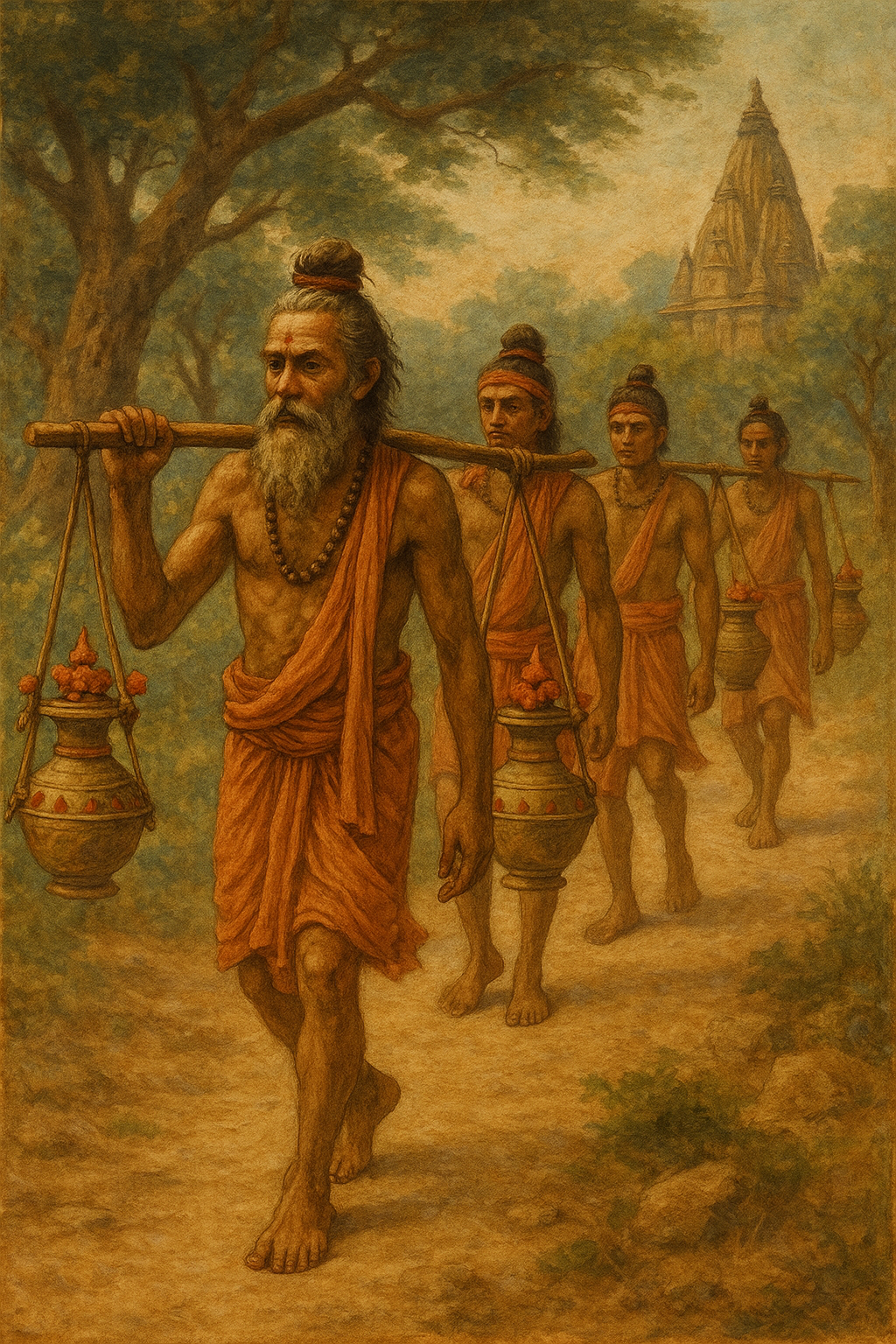
1. Mythological Origin:
According to Puranic legend, during the Samudra Manthan (churning of the ocean), a deadly poison called Halahala emerged, threatening to destroy all life. Lord Shiva drank the poison to save creation. To cool the burning effect of the poison, gods poured Ganga water over Shiva’s head. This myth is symbolically re-enacted by devotees carrying Ganga water to offer it to Shiva, believing it reduces negativity and heals karmic burdens.
2. Ravana’s Devotion:
Another strong legend connects the ritual to Ravana, the demon king of Lanka. It is believed that Ravana carried Ganga water in a kanwar to Baidyanath Jyotirlinga in Deoghar to offer it to Lord Shiva and heal him. This story cements Baidyanath as a prime destination for Kanwariyas to this day.
How old is this culture and tradition?
The ritual itself is ancient, with textual references in medieval Puranic literature indicating it has been practiced in some form for at least 800-1000 years. However, the massive collective yatra as seen today – with lakhs of devotees walking together in monsoon months (especially July-August) – is a more recent cultural phenomenon. Its exponential growth happened over the last few centuries, gaining a particularly strong mass-movement character in the past 30-40 years due to improved road networks, organised devotional groups and camps, and promotion through devotional music and community mobilisation.
Why do they walk barefoot?
Walking barefoot symbolises penance, humility, and devotion. It is believed that enduring physical discomfort burns ego and purifies the devotee, bringing them closer to Shiva’s grace.
Kanwar Yatra Today: A Living Tradition
Today, the Kanwar Yatra is more than a ritual. It is a festival of faith as entire routes are lit with music, food stalls, and resting camps. It is a test of endurance and devotion, covering 100-300 km on foot in peak humidity. It is also a display of organised cultural solidarity as local governments and communities coordinate traffic and safety to support the yatra.
Similar water-carrying pilgrimages in other cultures
Water-carrying pilgrimages are not unique to the Kanwariya tradition. In Christianity, especially in Orthodox traditions, holy water is carried from sacred springs or rivers back to churches or homes as part of purification and blessing rituals. In Islam, pilgrims at Zamzam in Mecca collect and carry back water from the Zamzam well, considered sacred and healing. Among Native American cultures, water is also carried ceremonially during rain-invoking rituals to symbolise the life force. These practices, like the Kanwar Yatra, reflect a universal human impulse to seek purification, healing, and connection with the divine through the medium of water.
Final Thoughts
The Kanwariya tradition is a powerful example of how mythology, devotion, and community identity merge into a living culture. From ancient Puranic legends to modern highways filled with saffron-clad pilgrims, the Kanwar Yatra remains a testament to the timeless bond between devotee, river, and deity.

